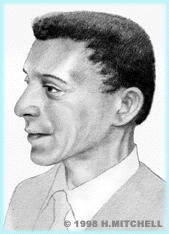George Carruthers
George R. Carruthers was a pioneer in the use of ultraviolet spectroscopy to learn more about the earth and the universe.
Born in Cincinnati in 1939, Carruthers was an inventive and inquisitive child. At age 10 his enthusiasm for books of science – fact and fiction – led him to construct his own telescope from cardboard tubing and lenses he had ordered through the mail. As a result, Carruthers was already an experienced, if amateur, astronomer by the time he entered the University of Illinois (1957). There, he added the disciplines of physics and nuclear engineering to his expertise. In time he earned a BS (1961) and MS (1962) and a PhD in aeronautical and astronomical engineering (1964).
After graduate school, Carruthers gladly accepted a position as Research Physicist with the Naval Research Laboratory (NRL) in Washington, D.C. (1964).
Carruthers excelled at developing new instrumentation often as the Principal Investigator for research projects and became an expert in ultraviolet radiation. In fact, he later became head of NRL’s Ultraviolet Measurements Branch in 1982. But his first major contribution in this field was to lead the team that invented the far ultraviolet camera / spectrograph used for the Apollo 16 mission to the moon in 1972.
Ultraviolet (UV) “light” is the swath of electromagnetic radiation with a wavelength from about 400 to four nanometers between visible light and x-rays. UV emissions give the best clues to the nature of very hot celestial objects – for example, stars are two to ten times as hot as our sun. But the earth’s atmosphere absorbs most UV emissions from space, so a UV camera operating on the moon would open a whole new world of information.
Carruthers led the team that invented that camera. They surmounted all challenges of instrumentation and design to create a 50-pound, gold-plated apparatus that recorded radiation from the upper half of the UV spectrum. The Apollo 16 crew deployed Carruthers’ camera on the moon’s surface at various points of view and returned with almost 200 UV “photos,” including views of newly discovered stars and nebulae. The camera itself had to be left behind, but a second version of it was used aboard the final Skylab flight (1973) to study the comet Kohoutek.
Carruthers’ far-ultraviolet spectrograph also provided new views of the Earth, specifically of the ionosphere, the stratum of our atmosphere approximately 50 to 400 miles above the surface. Carruthers’ work also focused on UV imaging of the Earth’s polar auroras and of airglow – a faint photochemical luminescence found in the upper atmosphere.
In 1987, Carruthers was named Black Engineer of the Year. In 1997, he joined the Independent Scientific Review that advises the Hubble Space Telescope Project. In addition to working at NRL and collaborating with NASA, Carruthers actively promoted science and technology among young people, especially Black Americans. Carruthers was awarded the 2012 National Medal of Technology and Innovation by President Obama at the White House.
George Carruthers continued to be a driving force in astrophysics research and science education for many years. He sadly passed away in December of 2020 at the age of 81.


